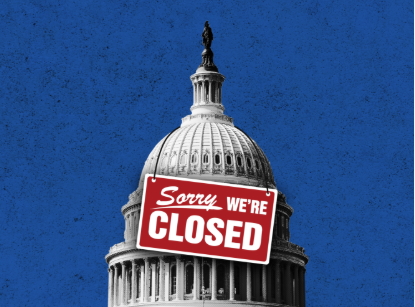The U.S. government has officially shut down after lawmakers failed to reach a funding deal, and Washington is preparing for what could be a long standoff.
Why the Shutdown Happened
Republicans supported a temporary funding bill to keep the government running until November 21. But Democrats blocked it, demanding it include funding to reverse Medicaid cuts and extend health insurance tax credits under the Affordable Care Act. Republicans rejected the proposal, calling it too expensive, and neither side has shown signs of compromise.

Also Read: Best long term Canadian stocks
Who’s Affected?
Around 750,000 federal workers could be furloughed daily, costing about $400 million per day in lost compensation. Essential workers—like military personnel, air traffic controllers, and federal law enforcement—will continue working but won’t get paid until after the shutdown ends.
By law, all furloughed workers will receive back pay once the government reopens.
Also Read: Long term investing in Canada
What Stays Open?
- Mail service: Continues as usual.
- Social Security, Medicare, Veterans Affairs: Benefits and services continue.
- FBI, CIA, military, TSA, air travel: Operational.
- National Parks: Stay open, but with limited staff. Issues like vandalism and trash could lead to temporary closures.
- Smithsonian museums and National Zoo: Remain open through at least Monday.
What Closes or Slows Down?
- Health research and new patient enrollment at NIH will pause.
- The FDA will delay drug and medical device reviews.
- Some CDC and public health research will stop.
- A large portion of Health and Human Services staff will be furloughed.
Will Federal Workers Be Fired?
Trump’s administration has signaled a more aggressive approach, suggesting mass firings rather than temporary furloughs for certain positions. That would mean permanent job losses and could reshape parts of the federal workforce.
Economic Impact
Short-term shutdowns have had limited impact on the U.S. economy. But if the shutdown lasts, it could shake public confidence and slow economic growth. According to Goldman Sachs, each week of a full shutdown could reduce economic growth by 0.15 to 0.2 percentage points, though it typically rebounds after reopening.
For now, the nation waits as Congress remains divided—with no end in sight.
Sign Up For our Newsletters to get latest updates






